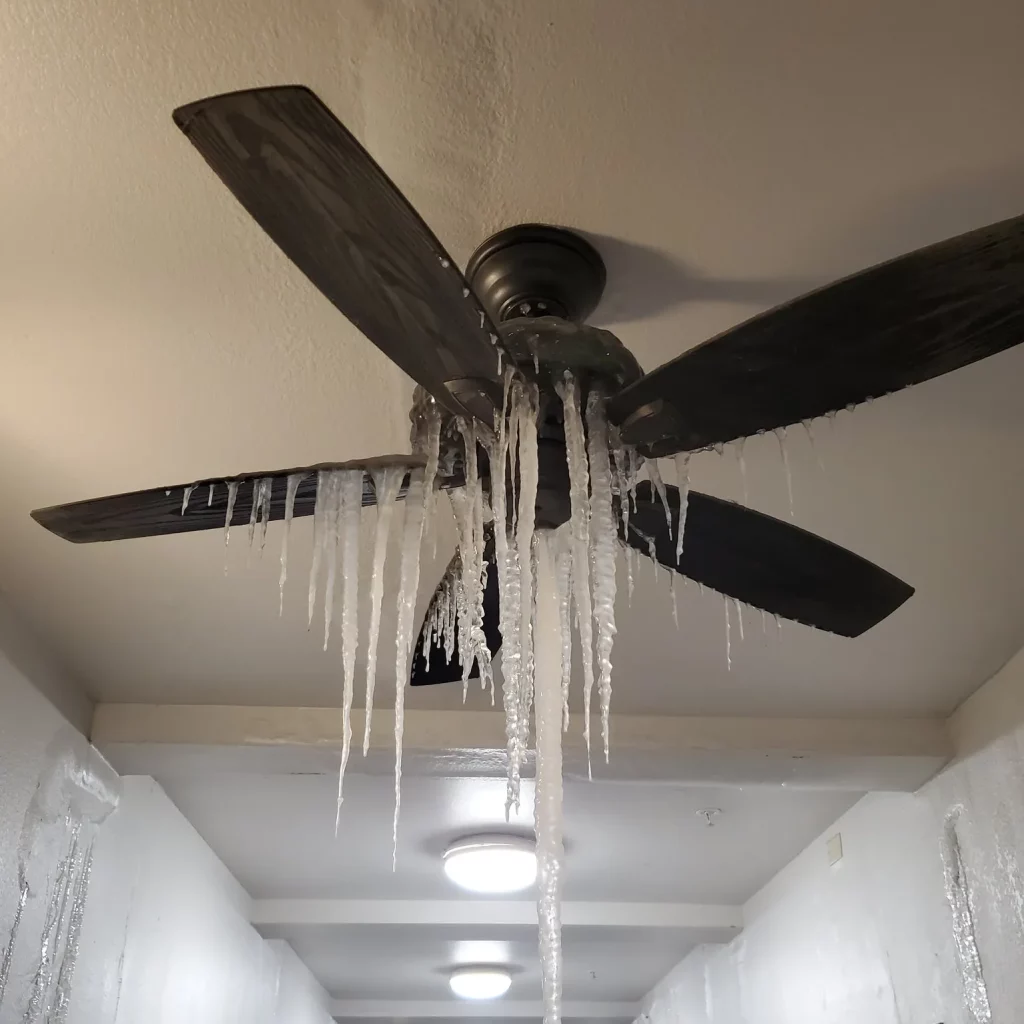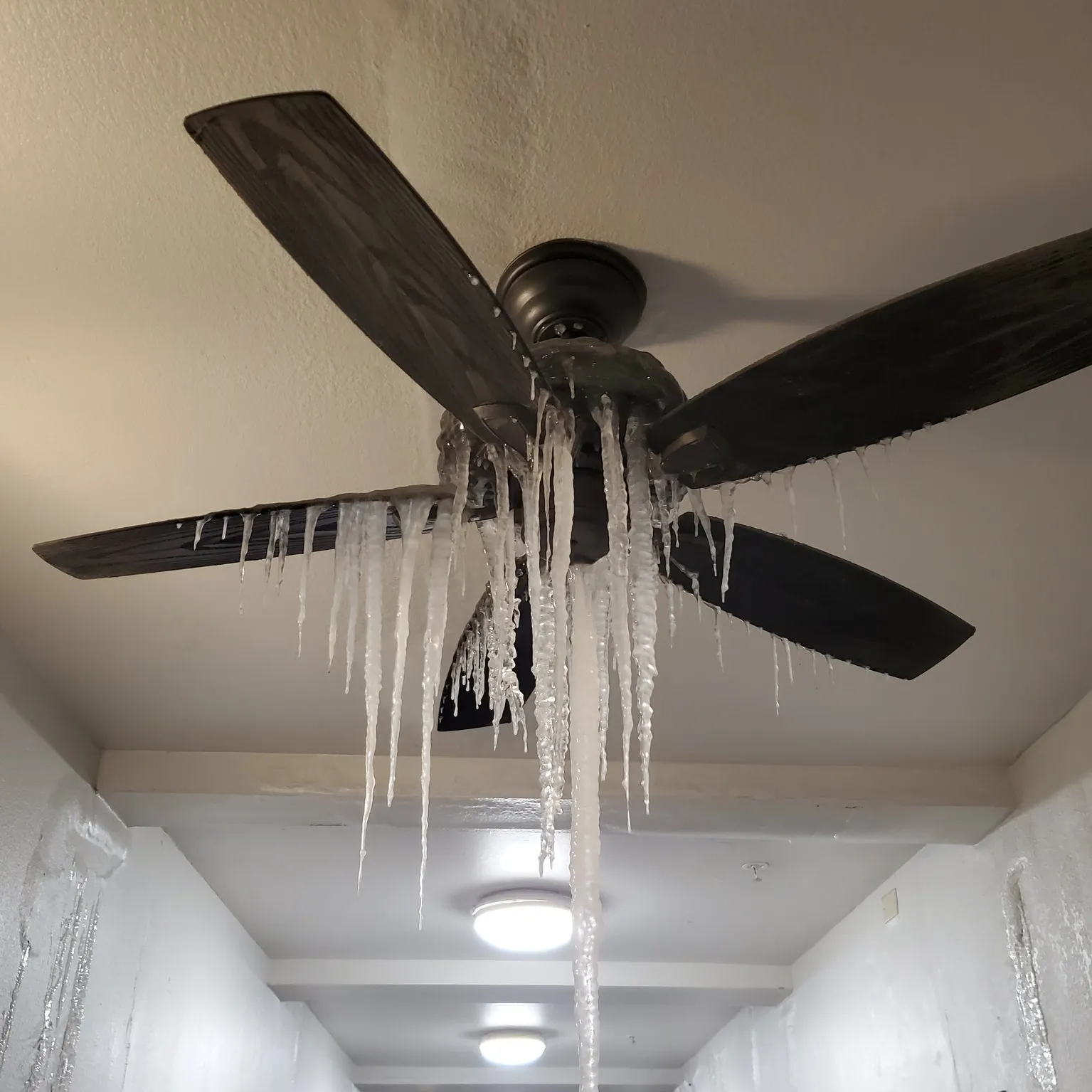Ceiling fans are a popular addition to homes for their cooling effects, energy efficiency, and aesthetic appeal. However, encountering a ceiling fan leaking water can be puzzling and concerning. In this article, we will explore the various reasons why your ceiling fan might be leaking water and provide practical solutions to address this issue effectively. Let’s dive into the world of ceiling fan leaks.

Understanding Ceiling Fan Leaks
A ceiling fan leaking water is a manifestation of an underlying problem. It’s not a common occurrence, but when it happens, it requires immediate attention. Here are some common causes of water leaks from ceiling fans:
- Roof Leaks One of the primary reasons for water leaks from a ceiling fan is a roof leak. When it rains, water can infiltrate through damaged shingles, cracked flashing, or deteriorated roof sealant. This water can travel through the ceiling and end up dripping from the ceiling fan. If left unattended, it can lead to more significant issues, including ceiling and electrical damage.
- Condensation In some cases, ceiling fan leaks are a result of condensation. When warm, moist air contacts the blades of a ceiling fan, it can create condensation. If this moisture isn’t properly managed, it may accumulate and eventually drip down from the fan. This is more common in humid climates or poorly ventilated spaces.
- Plumbing Issues Ceiling fans located near plumbing fixtures, like bathrooms, may experience leaks due to plumbing issues. A leaky pipe or a poorly sealed connection can cause water to seep into the ceiling, eventually making its way to the fan.
Solving the Ceiling Fan Leaking Water Problem
Now that we’ve identified potential causes of ceiling fan leaks, let’s explore how to address and resolve this issue.
- Inspect the Roof If you suspect a roof leak is the culprit, the first step is to inspect your roof. Look for missing or damaged shingles, deteriorated flashing, or signs of water damage in your attic. If you find any issues, it’s essential to repair them promptly. This may require the expertise of a professional roofer, especially if the problem is extensive.
- Manage Condensation To address condensation-related ceiling fan leaks, ensure proper ventilation in your home. Use exhaust fans in bathrooms and kitchens to remove excess moisture. Additionally, you can consider installing a dehumidifier to maintain the humidity at an acceptable level.
- Check Plumbing If you suspect plumbing issues, examine the pipes and connections near the ceiling fan. Look for signs of water damage, such as water stains or wet spots. If you find any leaks, repair or replace the damaged plumbing components.
- Ceiling Fan Inspection Inspect the ceiling fan itself for any damage or signs of water infiltration. If the fan’s motor or electrical components have been exposed to water, it may need replacement or professional repair. Ensure the fan is properly installed and balanced to prevent further issues.
Preventing Future Ceiling Fan Leaks
Prevention is often the best strategy to avoid ceiling fan leaks:
- Regular Roof Maintenance Schedule regular roof inspections and maintenance to catch and repair issues before they lead to leaks.
- Good Ventilation Properly ventilate your home to manage humidity and condensation. This can help prevent water accumulation on your ceiling fan.
- Prompt Repairs Address any signs of water damage or leaks promptly. Delaying repairs can lead to more extensive problems and costly repairs.
Read too: Why Is My Ceiling Leaking Brown Water
Conclusion
A ceiling fan leaking water is a situation that requires your immediate attention. By understanding the potential causes and implementing the appropriate solutions, you can resolve the issue effectively. Regular maintenance, prompt repairs, and proper ventilation are key to preventing future ceiling fan leaks. Remember that safety should always be a priority, and if you’re uncertain about the cause or how to fix the issue, consult with a professional for guidance and assistance.
